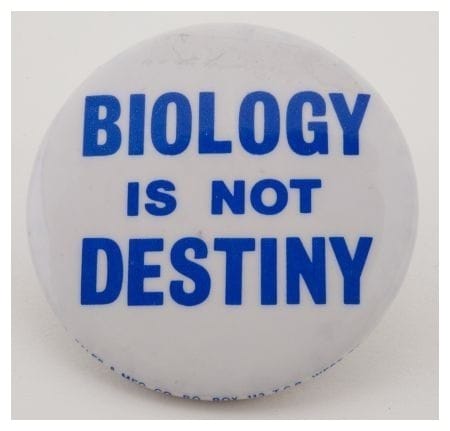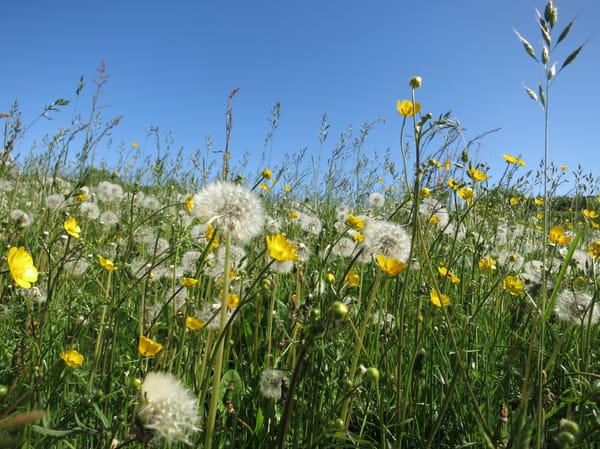An extremely rough guide to scrutinising viral transphobic media
So here’s a rough draft of how I approach looking at information and how you can if you want to, maybe. Unfortunately it takes a lot of…
So here’s a rough draft of how I approach looking at information and how you can if you want to, maybe. Unfortunately it takes a lot of additional effort over simply reading the material and sharing it. On the other hand, any issues you identify can also be shared quickly with other people to re-evaluate their view.
1) Find the source material. In some cases this will be finding videos and photos floating around online. What you want is to find the earliest available one. For images you can use a variety of different image search engines (see this list for a list of investigative tools). You must remember that this might not necessarily be the original copy. In practice I find that there are seeders, editors and reposters for most viral material. Reposters may not be particularly ideological and can exist simply to try to extract social (and real) capital by taking material and posting it as their own without traceable citations. Watching a topic on social media can be a useful way of dating the piece of digital material through internet history because posts are time stamped and links to earlier versions can be surfaced. Search engines can be used in time boxed ways, but bear in mind they take cues for the date items were posted from the websites themselves, and in many cases these can be doctored or updated by the web hosts. The Internet Archive at web.archive.org can help clear up ambiguities here and provide third party attestation about the history of any changes.
For text based evidence you want to follow a similar process but rather than using image search you will want to use literal searches (i.e. using quotation marks) on text fragments in order to search for earliest references to particular phrasings and evidence in the case of quotations, so that you can look at who actually said a thing being claimed, who reported on it, how and where that came from. Again, it is important to be aware that the earliest hits you find may not be the earliest hits in existence for the item.
In the case of formal reports, always check the citations, and track down when research data was collected, by whom, where, how they gathered it, and so on. This is often important in cases where you find a report that’s published in one time or place but it may hinge in the fine print on estimates in another place which may or may not be appropriate. For some technical reports (eg public government data) you may need to hunt down specific technical definitions of terms and glossaries to make sense of the information. For Freedom of Information data being reported, know that many municipal bodies publish full responses to these independently of the reporter discussing an FOI response.
2) If you can not be certain of the origins of a piece of data (e.g. in the cases of videos where many shared it but noone claimed to have filmed it), think about a rational way to time box the item’s origin. Look at the pattern of early references to the material. Who is sharing them? As the data spreads through social networks what direction is it spreading towards. Can you draw any hypothesis about which direction the data has been disseminated from, or determine upper and lower boundaries for when it was disseminated originally?
3) Once you have succeeded in tracking the evidence you’re interested in to its origins, use the context for its original publication to look for other contextual information. In cases where you found an original social media item, what other items were they posting around that time? What were connected individuals posting around the same time? Compare the original with viral or mainstream media instances of the material. Has the original piece of evidence been edited between the time of posting and the time it hit the mainstream? Are there other videos, images, etc from the same time or place providing important context which have been set aside? How do these change the narrative?
4) Take a step back and look at the narrators involved in shaping and disseminating the narrative that became viral. How are these connected to each other? What do they get out of sharing these narratives and promoting each other? Is this collaboration intentional or coincidental? Is it regular or one off? Are there identifiable actors involved in regularly bridging a gap between different ideological groups?
5) For instances where key pieces of context have been removed, determine identifiable limits for when this context was removed and if possible who removed it? Is this a pattern they engage in a lot, or is it likely that they simply didn’t understand the significance of the material they set aside? Try to err generally against suspicion or paranoia and be generous where reasonable about the motivations of those involved — conspiracy between parties requires a lot more coordination in practice than simple errors of judgement and the practical application of confirmation bias. On the other hand some omissions are rather more blatant, and in cases where the person resharing the material has history/status in a field expected to undertake more critical engagement with media (e.g. journalists or researchers) take this into consideration.
6) For formal reports in some cases narratives rather than literal text fragments or images/video are reshared without citing sources. Can you determine whether the reshare minus context was done with knowledge of the original source? What key phrases or ideas can you trace the history of, and what can you determine from looking at these?
7) Build an understanding for yourself along the way of the impact of causality — information in the past may (with often unknown certainty) be available to anyone in the present or future, but information in the present can not travel backwards. In some cases information in the past may be a necessary dependency for an event in the future, meaning that you can constrain the earliest and latest possible time for a given event. It’s important to keep a picture of how each event connects to others in time series and to be careful not to muddle the trajectory of information traveling through social, digital or physical space. Additionally, strong sources of historic evidence (where the time stamps attached to items are controlled by a third party for instance) are a useful way of establishing guarantees against certain sorts of collusion which can help with clarifying motivations. For instance social media posts in the past for services like Twitter or independent web archives can not be edited in light of later information to make them more flattering to the poster. This makes them a vital source for understanding how knowledge and narratives have transformed over time.
8) What was the ultimate impact of this communications trajectory? Could this have been anticipated? What relationship do actors in the history of a narrative who contributed to shaping it have to the impact.
Concrete example
As a worked example, gender critical philosopher Jane Clare Jones wrote a report entitled “The Political Erasure Of Sex" funded by Oxford University, where in the appendix, she repeated a narrative already popular in Gender Critical circles that the transgender rights movement was funded by wealthy philanthropists with an agenda (who happen to be Jewish).
Looking back through writings before hand, this narrative was popularised originally by Jennifer Bilek of ecofascist group Deep Green Resistance and transphobic feminist organisation Women’s Liberation Front who now regularly writes for Catholic ultraconservative blog First Things and has publicly shared work by known fascist Keith Woods. Bilek also more recently defended a book banned by Amazon which alleges that trans healthcare is the product of a centuries long Jewish conspiracy to destroy the West (and coincidentally cited Bilek’s work heavily).
Understanding the context to this narrative (though some of it happened after Jane Clare Jones’ report to be clear) an obvious question is whether Jones was aware of Bilek’s work when she wrote her Political Erasure Of Sex report.
Investigations into Jane Clare Jones' Twitter from the year before the report was released revealed evidence of her discussing Bilek’s writing approvingly. We can’t tell if the plagiarism of the narrative here was intentional, or why Jones did not cite Bilek in her report (remember, be generous!), but we are able to show from understanding the context looking around the report that the goal of the report was to demonstrate evidence of a conspiracy to capture policy establishments and subvert them to “gender ideology" in a relatively prestigious format with the support of an academic institution. But the function (intentional or otherwise) of the decision not to cite Bilek was to launder an antisemitic conspiracy theory into academic writing without it being readily traceable for those who wanted to look further into the history of the ideas behind it. This report established Jones as a serious intellectual in the Gender Critical movement but there’s no clear reason to believe that laundering this narrative was deliberate. On the other hand, Bilek has very consistently promoted, written and rewritten, republished these antisemitic narratives, as well as promoting creators connected with neonazi publications. If that isn’t deliberate, it is certainly surprisingly directed.
And in a nutshell, that’s how you use investigative skills to examine viral narratives and establish a firmer picture of events.


